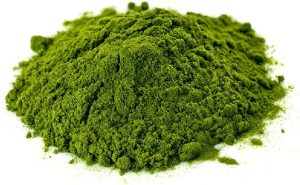
- Vitamin A (Retinol)
- Vitamin B1(Thiamin)
- Vitamin B2 (Riboflavin)
- Vitamin B3 (Niacin)
- Vitamin B5 (Panthotenic Acid)
- Vitamin B6 (Pyridoxine)
- Vitamin B7 (Biotin)
- Vitamin B9 (Folate or Folic Acid)
- Vitamin B12 (Cobalamin)
- Vitamin C (Ascorbic Acid)
- Vitamin D: Vitamin D2 (Ergocalciferol) and Vitamin D3 (Cholecalciferol)
- Vitamin E (Tocopheryl Acetate)
- Vitamin K: Vitamin K1 (Phylloquinone) and Vitamin K2 (Menaquinones)
- Some Reputable Websites to Read More About All Vitamins
- Disclaimer
Vitamin A (Retinol)
1.1 Functions of Vitamin A:
- Vision: Vitamin A is crucial for maintaining healthy vision. It is a component of rhodopsin, a protein in the eyes that allows us to see in low light conditions.
- Immune System: It plays a role in supporting the immune system, helping the body fight infections and illnesses.
- Cell Growth and Differentiation: Vitamin A is essential for the growth and development of cells, as well as for the differentiation of cells into specialized tissues.
- Reproduction: It is important for reproductive processes, including the development of sperm and the proper development of the embryo and fetus during pregnancy.
- Skin Health: Vitamin A contributes to the health of the skin by promoting cell turnover and supporting the production of new skin cells.
1.2 Sources of Vitamin A:
- Preformed Vitamin A (Retinoids): Animal products such as liver, fish oil, eggs, and dairy products.
- Provitamin A (Carotenoids): Found in fruits and vegetables with deep orange, red, and green colors. Examples include carrots, sweet potatoes, spinach, kale, and apricots.
1.3 Deficiency of Vitamin A:
- Night Blindness: Impaired vision in low light conditions is one of the early signs of vitamin A deficiency.
- Xerophthalmia: A more severe deficiency can lead to xerophthalmia, a condition that can cause dryness, thickening, and clouding of the cornea, leading to blindness.
- Increased Susceptibility to Infections: Vitamin A deficiency compromises the immune system, making individuals more susceptible to infections.
1.4 Supplementation of Vitamin A:
- Supplementation with vitamin A is often recommended in cases where dietary intake is insufficient or when certain medical conditions hinder absorption. However, excessive supplementation can lead to toxicity.
1.5 Toxicity of Vitamin A:
- Hypervitaminosis A: Consuming too much vitamin A can lead to a condition called hypervitaminosis A, which can result in symptoms such as nausea, vomiting, dizziness, and, in severe cases, can be toxic to the liver.
- Birth Defects: Pregnant women should avoid excessive vitamin A intake, as it can be harmful to the developing fetus and may lead to birth defects.
It’s important to note that while vitamin A is essential for health, balance is key. Consuming it in appropriate amounts through a well-rounded diet is generally the best approach to avoid both deficiency and toxicity. Always consult with a healthcare professional before considering vitamin A supplementation.
For more detailed information on Vitamin A, please click here
Vitamin B1(Thiamin)
2.1 Functions of Vitamin B1 (Thiamin):
Vitamin B1, also known as thiamin, is a water-soluble vitamin that plays crucial roles in various physiological functions:
- Energy Metabolism: Thiamin is a coenzyme in the metabolism of carbohydrates, helping convert food into energy.
- Nervous System Function: It is essential for the proper functioning of the nervous system and supports the synthesis of neurotransmitters.
- Heart Function: Thiamin is involved in the maintenance of a healthy cardiovascular system.
- Muscle Contraction: It contributes to the proper functioning of muscles.
2.2 Sources of Vitamin B1:
Thiamin is found in a variety of foods, including:
- Whole Grains: Brown rice, whole wheat, and oats.
- Legumes: Beans, lentils, and peas.
- Nuts and Seeds: Sunflower seeds and peanuts.
- Lean Meats: Pork, beef, and poultry.
- Dairy Products: Milk and yogurt.
2.3 Deficiency of Vitamin B1:
Thiamin deficiency, known as beriberi, can have serious consequences. Symptoms may include:
- Weakness and Fatigue: Generalized weakness and tiredness.
- Muscle Wasting: Loss of muscle tissue and strength.
- Nervous System Issues: Tingling or numbness in the extremities, difficulty walking, and impaired cognitive function.
2.4. Supplementation of Vitamin B1:
Supplementation is generally not needed for individuals with a balanced diet. However, it may be recommended for those at risk of deficiency due to certain medical conditions or dietary restrictions.
2.5 Toxicity of Vitamin B1:
Thiamin is water-soluble, and excess amounts are usually excreted in urine, resulting in a low risk of toxicity. There is no established tolerable upper intake level for thiamin, as it is considered safe even at higher doses. However, it’s essential to follow recommended dietary guidelines and consult with a healthcare professional before considering supplements, especially in high doses, to avoid potential interactions or adverse effects.
For more detailed information on Vitamin B1, please click here
Vitamin B2 (Riboflavin)
1. Functions of Vitamin B2 (Riboflavin):
Vitamin B2, also known as riboflavin, is a water-soluble vitamin that plays essential roles in various bodily functions:
- Energy Metabolism: Riboflavin is a key component of enzymes involved in the metabolism of carbohydrates, fats, and proteins, contributing to the production of energy.
- Antioxidant Activity: It participates in antioxidant reactions, helping to neutralize free radicals and protect cells from oxidative stress.
- Tissue Maintenance and Growth: Riboflavin supports the maintenance and growth of skin, eyes, and other tissues.
- Vision: It is essential for maintaining healthy eyes and good vision.
2. Sources of Vitamin B2:
Riboflavin is found in a variety of foods, including:
- Dairy Products: Milk, cheese, and yogurt.
- Meat: Lean meats, poultry, and fish.
- Eggs: Especially in the yolk.
- Leafy Greens: Spinach, kale, and other leafy vegetables.
- Whole Grains: Whole grains and enriched cereals.
- Nuts and Seeds: Almonds and sunflower seeds.
3. Deficiency of Vitamin B2:
Riboflavin deficiency is rare in well-balanced diets but can occur. Symptoms include:
- Inflammation of the Mouth and Throat: Known as cheilosis and glossitis.
- Cracks or Sores at the Corners of the Mouth: Angular stomatitis.
- Red, Swollen, and Sore Tongue: Magenta tongue.
- Inflammation and Redness of the lining of the Eyes: Photophobia.
4. Supplementation of Vitamin B2:
Supplementation is generally not necessary for individuals with a balanced diet. However, it may be recommended for those at risk of deficiency, such as individuals with certain medical conditions or dietary restrictions.
5. Toxicity of Vitamin B2:
Riboflavin is water-soluble, and excess amounts are usually excreted in urine, resulting in a low risk of toxicity. There is no established tolerable upper intake level for riboflavin, as it is considered safe even at higher doses. However, it’s essential to follow recommended dietary guidelines and consult with a healthcare professional before considering supplements, especially in high doses, to avoid potential interactions or adverse effects.
For more detailed information on Vitamin B2, please click here
Vitamin B3 (Niacin)
Fuctions of Vitamin B3 (Niacin):
Vitamin B3 comprises niacin and its precursor, niacinamide. These compounds play crucial roles in various physiological functions:
- Energy Metabolism: Niacin is essential for the metabolism of carbohydrates, fats, and proteins, contributing to the production of energy.
- Cellular Respiration: It participates in cellular respiration processes, facilitating the release of energy from nutrients.
- DNA Repair: Niacin is involved in DNA repair mechanisms, supporting genomic stability.
- Skin Health: Niacinamide, a form of niacin, is known for its role in maintaining skin health and has been used in skincare products.
2. Sources of Vitamin B3:
Niacin can be obtained from various food sources, including:
- Meat: Chicken, turkey, beef, and pork.
- Fish: Tuna, salmon, and other seafood.
- Nuts and Seeds: Peanuts, sunflower seeds, and almonds.
- Whole Grains: Brown rice, wheat, and oats.
- Legumes: Lentils and peas.
- Dairy Products: Milk and eggs.
3. Deficiency of Vitamin B3:
Severe niacin deficiency leads to a condition known as pellagra, characterized by the “3 Ds”:
- Dermatitis: Inflammation of the skin, leading to a rash.
- Diarrhea: Gastrointestinal issues, including diarrhea.
- Dementia: Neurological symptoms, including confusion and cognitive decline.
Pellagra is rare in developed countries but may occur in populations with inadequate niacin intake.
4. Supplementation of Vitamin B3:
Supplementation may be recommended for individuals with specific health conditions or dietary restrictions that limit niacin intake. Niacin supplements should be taken under healthcare supervision to avoid potential side effects.
5. Toxicity of Vitamin B3:
High doses of niacin supplements can cause niacin toxicity, leading to symptoms such as flushing, itching, and gastrointestinal issues. The risk of toxicity is generally associated with pharmacological doses used for treating certain medical conditions rather than dietary sources. High-dose niacin supplementation should be done under medical guidance to monitor for potential adverse effects.
For more detailed information on Vitamin B3, please click here
Vitamin B5 (Panthotenic Acid)
Functions of Vitamin B5 (Pantothenic Acid):
Vitamin B5, also known as pantothenic acid, is a water-soluble vitamin that plays essential roles in various physiological functions:
- Energy Metabolism: Pantothenic acid is a component of coenzyme A (CoA), which is involved in the metabolism of carbohydrates, fats, and proteins, contributing to energy production.
- Synthesis of Fatty Acids: It is essential for the synthesis of fatty acids, which are crucial for various cellular processes.
- Coenzyme A (CoA) Formation: Pantothenic acid is a precursor to CoA, a coenzyme that participates in numerous biochemical reactions, including the citric acid cycle.
- Cellular Function: CoA is involved in the synthesis of various molecules necessary for cell function and structure.
2. Sources of Vitamin B5:
Pantothenic acid is found in a variety of foods, including:
- Meat: Chicken, beef, and pork.
- Whole Grains: Brown rice, whole wheat, and oats.
- Legumes: Lentils and peas.
- Dairy Products: Milk, yogurt, and cheese.
- Eggs: Especially in the yolk.
- Vegetables: Broccoli, avocados, and sweet potatoes.
3. Deficiency of Vitamin B5:
Pantothenic acid deficiency is rare, as it is widely distributed in foods. However, severe deficiency can lead to symptoms such as:
- Fatigue: Due to its role in energy metabolism.
- Irritability: Emotional disturbances.
- Neurological Symptoms: Numbness and tingling in extremities.
4. Supplementation of Vitamin B5:
Supplementation is generally not needed for individuals with a balanced diet. Pantothenic acid is widely available in various foods. However, supplements may be considered in certain medical conditions or under the guidance of a healthcare professional.
5. Toxicity of Vitamin B5:
There is no established upper limit for pantothenic acid, as it is water-soluble, and excess amounts are typically excreted in urine. Toxicity is rare, and adverse effects are not commonly associated with high dietary intake. However, it’s advisable to follow recommended dietary guidelines and consult with a healthcare professional before considering supplements, especially in high doses.
For more detailed information on Vitamin B5, please click here
Vitamin B6 (Pyridoxine)
Functions of Vitamin B6 (Pyridoxine):
Vitamin B6, also known as pyridoxine, is a water-soluble vitamin that plays essential roles in various physiological functions:
- Amino Acid Metabolism: B6 is involved in the metabolism of amino acids, the building blocks of proteins.
- Hemoglobin Formation: It supports the synthesis of hemoglobin, the protein in red blood cells responsible for oxygen transport.
- Neurotransmitter Synthesis: B6 is crucial for the synthesis of neurotransmitters, including serotonin and dopamine, which are involved in mood regulation.
- Immune Function: It contributes to the proper functioning of the immune system.
- Glycogen Breakdown: B6 participates in the breakdown of glycogen into glucose, contributing to energy metabolism.
2. Sources of Vitamin B6:
Vitamin B6 is found in a variety of foods, including:
- Meat: Chicken, turkey, pork, and beef.
- Fish: Tuna, salmon, and trout.
- Fortified Cereals: Some breakfast cereals are fortified with B6.
- Legumes: Chickpeas, lentils, and beans.
- Nuts and Seeds: Sunflower seeds and pistachios.
- Vegetables: Potatoes, spinach, and bananas.
3. Deficiency of Vitamin B6:
Vitamin B6 deficiency is uncommon but can lead to various symptoms, including:
- Anemia: Due to impaired hemoglobin synthesis.
- Neurological Issues: Numbness or tingling in the extremities, difficulty walking, and cognitive impairment.
- Dermatitis: Inflammation of the skin.
Certain medications, medical conditions, and alcoholism can contribute to B6 deficiency.
4. Supplementation of Vitamin B6:
Supplementation may be recommended for individuals with specific medical conditions that impair B6 absorption or metabolism. However, excessive supplementation should be avoided, as high doses can lead to toxicity.
5. Toxicity of Vitamin B6:
Excessive intake of vitamin B6 from supplements can lead to toxicity, known as vitamin B6 toxicity or pyridoxine toxicity. Symptoms may include nerve damage, numbness, and difficulty coordinating movements. The tolerable upper intake level for B6 has been established, and it’s important to stay within recommended doses. Always consult with a healthcare professional before considering B6 supplementation.
For more detailed information on Vitamin B6, please click here
Vitamin B7 (Biotin)
ons of Vitamin B7 (Biotin):
Vitamin B7, also known as biotin, is a water-soluble vitamin that plays crucial roles in various physiological functions:
- Carbohydrate, Fat, and Protein Metabolism: Biotin is a coenzyme involved in the metabolism of carbohydrates, fats, and proteins, contributing to energy production.
- Cell Growth: It plays a role in cell growth, development, and maintenance.
- Healthy Skin, Hair, and Nails: Biotin is often associated with maintaining the health of the skin, hair, and nails.
2. Sources of Vitamin B7:
Biotin is found in a variety of foods, including:
- Eggs: Especially the yolk.
- Meat: Organ meats (liver, kidney), pork, and beef.
- Fish: Salmon, trout, and sardines.
- Dairy Products: Milk and cheese.
- Nuts and Seeds: Almonds, peanuts, and sunflower seeds.
- Vegetables: Sweet potatoes and spinach.
3. Deficiency of Vitamin B7:
Biotin deficiency is rare and is often associated with specific conditions rather than dietary insufficiency. However, symptoms of deficiency may include:
- Dermatological Issues: Skin rashes, dermatitis, and dry skin.
- Hair Loss: Brittle hair or hair loss.
- Neurological Symptoms: Neuromuscular issues in severe cases.
Certain medical conditions, genetic factors, and prolonged use of certain medications may contribute to biotin deficiency.
4. Supplementation of Vitamin B7:
Biotin supplements are sometimes used to address specific health concerns, particularly those related to skin, hair, and nails. However, supplementation is generally not necessary for individuals with a balanced diet.
5. Toxicity of Vitamin B7:
Biotin is water-soluble, and excess amounts are typically excreted in urine, resulting in a low risk of toxicity. There is no established tolerable upper intake level for biotin, as it is considered safe even at higher doses. However, it’s advisable to follow recommended dietary guidelines and consult with a healthcare professional before considering supplements, especially in high doses, to avoid potential interactions or adverse effects.
For more detailed information on Vitamin B7, please click here
Vitamin B9 (Folate or Folic Acid)
Functions of Vitamin B9 (Folate/Folic Acid):
Vitamin B9, which includes both naturally occurring folate and synthetic folic acid, is a water-soluble vitamin with essential roles in various physiological functions:
- DNA Synthesis and Repair: Folate is crucial for the synthesis and repair of DNA, promoting cell division and growth.
- Red Blood Cell Formation: It plays a key role in the production of red blood cells, helping prevent megaloblastic anemia.
- Neural Tube Formation: Adequate folate intake during early pregnancy is critical for proper neural tube formation in the developing fetus, reducing the risk of neural tube defects.
2. Sources of Vitamin B9:
Folate is found in a variety of foods, including:
- Leafy Greens: Spinach, kale, and collard greens.
- Legumes: Lentils, chickpeas, and black beans.
- Citrus Fruits: Oranges, lemons, and grapefruits.
- Avocado: A good source of folate.
- Fortified Foods: Some cereals and grains are fortified with folic acid.
3. Deficiency of Vitamin B9:
Folate deficiency can lead to various health issues, including:
- Megaloblastic Anemia: Large, immature red blood cells due to impaired DNA synthesis.
- Neural Tube Defects: In pregnant individuals, inadequate folate intake can increase the risk of neural tube defects in the developing fetus.
Certain medical conditions, medications, and alcoholism can contribute to folate deficiency.
4. Supplementation of Vitamin B9:
Folate supplementation is often recommended during pregnancy to reduce the risk of neural tube defects. Additionally, individuals with certain medical conditions that interfere with folate absorption may require supplementation. Folic acid supplements are commonly used.
5. Toxicity of Vitamin B9:
Excessive intake of folate from supplements can mask vitamin B12 deficiency symptoms, leading to potential neurological issues. While folate from food sources is considered safe, it’s important to follow recommended dietary guidelines and consult with a healthcare professional before considering folic acid supplements, especially in high doses.
For more detailed information on Vitamin B9, please click here
Vitamin B12 (Cobalamin)
Functions of Vitamin B12 (Cobalamin):
Vitamin B12 is a water-soluble vitamin that plays crucial roles in various physiological functions:
- Red Blood Cell Formation: B12 is essential for the production and maturation of red blood cells, preventing megaloblastic anemia.
- DNA Synthesis: It is involved in the synthesis and repair of DNA, contributing to cell division and growth.
- Neurological Function: B12 supports the health of the nervous system and is crucial for the maintenance of the protective myelin sheath around nerve fibers.
- Energy Metabolism: B12 participates in the metabolism of carbohydrates, fats, and proteins, contributing to the production of energy.
2. Sources of Vitamin B12:
Vitamin B12 is primarily found in animal products, including:
- Meat: Beef, pork, lamb, and poultry.
- Fish: Salmon, trout, tuna, and sardines.
- Dairy Products: Milk, cheese, and yogurt.
- Eggs: Especially in the yolk.
Vitamin B12 is generally not found in significant amounts in plant-based foods, so individuals following vegetarian or vegan diets may need to obtain B12 through fortified foods or supplements.
3. Deficiency of Vitamin B12:
Vitamin B12 deficiency can lead to various health issues, including:
- Pernicious Anemia: A type of anemia resulting from B12 deficiency.
- Neurological Symptoms: Numbness, tingling, and difficulty walking.
- Fatigue and Weakness: Due to impaired red blood cell production.
Risk factors for deficiency include age, certain medical conditions (e.g., pernicious anemia, atrophic gastritis), and dietary restrictions.
4. Supplementation of Vitamin B12:
Supplementation with B12 may be necessary for individuals at risk of deficiency, including older adults, those with absorption issues, and those following vegetarian or vegan diets. B12 supplements are available in various forms, including oral supplements and injections.
5. Toxicity of Vitamin B12:
Vitamin B12 is considered safe, and there is no established tolerable upper intake level. Excess B12 is typically excreted in urine. However, it’s important to use supplements under healthcare supervision to avoid unnecessary high doses. There are no known toxic effects of excessive B12 intake from food sources.
For more detailed information on Vitamin B12, please click here
Vitamin C (Ascorbic Acid)
Functions of Vitamin C (Ascorbic Acid):
- Antioxidant: Vitamin C is a powerful antioxidant that helps protect cells from damage caused by free radicals. Free radicals are unstable molecules that can contribute to aging and various diseases.
- Collagen Synthesis: Vitamin C plays a crucial role in the synthesis of collagen, a protein that is essential for the health of skin, blood vessels, bones, and connective tissues.
- Immune System Support: It enhances the immune system by supporting the function of white blood cells and promoting the production of antibodies.
- Wound Healing: Vitamin C is involved in the healing process of wounds and injuries. It helps the body repair and regenerate tissues.
- Iron Absorption: It improves the absorption of non-heme iron (the type of iron found in plant-based foods) from the digestive tract, aiding in the prevention of iron-deficiency anemia.
Sources of Vitamin C:
- Fruits: Citrus fruits (oranges, lemons, grapefruits), strawberries, kiwi, guava, and mango.
- Vegetables: Bell peppers, broccoli, Brussels sprouts, spinach, and tomatoes.
- Other Sources: Potatoes and some fortified foods.
Deficiency of Vitamin C:
- Scurvy: Severe deficiency of vitamin C can lead to scurvy, a condition characterized by fatigue, swollen and bleeding gums, joint pain, and anemia. Scurvy is rare today but historically affected sailors on long sea voyages with limited access to fresh fruits and vegetables.
- Impaired Wound Healing: Inadequate vitamin C can result in slower wound healing and difficulty repairing and maintaining connective tissues.
Supplementation of Vitamin C:
Supplementation with vitamin C is often recommended in cases where dietary intake is insufficient, or during periods of increased need (such as during illness or pregnancy). However, it’s important to note that excessive supplementation may lead to negative effects for some individuals, and it’s generally best to obtain nutrients through a balanced diet.
Toxicity of Vitamin C:
Vitamin C is water-soluble, meaning excess amounts are usually excreted in urine and toxicity is rare. However, very high doses from supplements can lead to side effects such as diarrhea, nausea, and stomach cramps. Individuals with kidney problems should be cautious with high-dose supplementation, as excess vitamin C can contribute to the formation of kidney stones.
As with any supplement, it’s advisable to consult with a healthcare professional before starting vitamin C supplementation, especially at high doses.
For more detailed information on Vitamin C, please click here
Vitamin D: Vitamin D2 (Ergocalciferol) and Vitamin D3 (Cholecalciferol)
Functions of Vitamin D:
- Calcium Absorption: Vitamin D is essential for the absorption of calcium and phosphorus in the intestines. This is crucial for maintaining healthy bones and teeth.
- Bone Health: It plays a key role in bone mineralization, helping to regulate the balance of calcium and phosphorus in the bones.
- Immune System Support: Vitamin D is involved in the regulation of the immune system, and its deficiency has been associated with an increased susceptibility to infections.
- Cell Growth and Differentiation: It is involved in the regulation of cell growth and differentiation.
Sources of Vitamin D:
- Sunlight: The skin can produce vitamin D when exposed to sunlight. However, the ability to synthesize vitamin D from sunlight depends on factors such as geographic location, time of day, skin color, and the use of sunscreen.
- Foods: Dietary sources include fatty fish (such as salmon and mackerel), cod liver oil, fortified dairy products, fortified cereals, and egg yolks.
Deficiency of Vitamin D:
- Rickets (in Children): Severe vitamin D deficiency can lead to rickets, a condition characterized by soft and weak bones, skeletal deformities, and impaired growth in children.
- Osteomalacia (in Adults): In adults, severe vitamin D deficiency can result in osteomalacia, a condition marked by the softening of the bones, muscle weakness, and bone pain.
- Increased Risk of Chronic Diseases: Vitamin D deficiency has been associated with an increased risk of various chronic diseases, including osteoporosis, cardiovascular diseases, and certain cancers.
Supplementation of Vitamin D:
Supplementation with vitamin D is often recommended in situations where sun exposure is limited, such as during the winter months, or for individuals with conditions that may hinder vitamin D absorption. It’s also recommended for groups at higher risk of deficiency, such as older adults.
Toxicity of Vitamin D:
Vitamin D toxicity is rare but can occur with excessive supplementation. Symptoms may include nausea, vomiting, weakness, and, in severe cases, can lead to elevated levels of calcium in the blood (hypercalcemia), which can affect the kidneys and other organs.
It’s important to note that while vitamin D is crucial for health, excessive supplementation should be avoided, and it’s advisable to consult with a healthcare professional to determine the appropriate dosage based on individual needs and circumstances.
For more detailed information on Vitamin D, please click here
Vitamin E (Tocopheryl Acetate)
Functions of Vitamin E:
- Antioxidant: Vitamin E is a potent antioxidant that helps protect cells from oxidative damage caused by free radicals. It plays a role in preventing or slowing down the aging process at the cellular level.
- Immune System Support: It supports the immune system and helps in the formation of red blood cells.
- Skin Health: Vitamin E is known for its role in promoting skin health. It can help in reducing the appearance of scars and promoting skin repair.
- Cell Membrane Integrity: It contributes to maintaining the integrity of cell membranes, which is essential for the proper functioning of cells.
Sources of Vitamin E:
- Nuts and Seeds: Almonds, sunflower seeds, hazelnuts.
- Vegetable Oils: Sunflower oil, safflower oil, wheat germ oil.
- Green Leafy Vegetables: Spinach, Swiss chard, kale.
- Fruits: Kiwi, mango, and certain berries.
Deficiency of Vitamin E:
Vitamin E deficiency is rare, but it can occur in individuals with certain medical conditions that impair fat absorption, such as cystic fibrosis or certain types of liver disease. Symptoms of deficiency may include muscle weakness, vision problems, and an impaired immune response.
Supplementation of Vitamin E:
Supplementation with vitamin E is generally not necessary for healthy individuals who consume a balanced diet with an adequate intake of fats. However, some people, such as those with certain medical conditions, may benefit from supplementation under the guidance of a healthcare professional.
Toxicity of Vitamin E:
Excessive supplementation with vitamin E can lead to toxicity, although it is relatively rare. Symptoms may include nausea, diarrhea, and, in severe cases, it can interfere with blood clotting. It’s important to note that getting vitamin E from food sources is generally safe, and toxicity is more likely to occur with high-dose supplements.
As with any supplement, it’s advisable to consult with a healthcare professional before starting vitamin E supplementation, especially at high doses.
For more detailed information on Vitamin E, please click here
Vitamin K: Vitamin K1 (Phylloquinone) and Vitamin K2 (Menaquinones)
Functions of Vitamin K:
- Blood Clotting: Vitamin K is essential for the synthesis of proteins involved in blood clotting. These proteins help prevent excessive bleeding when injuries occur.
- Bone Health: Vitamin K is also involved in the regulation of calcium in bones and may contribute to bone health.
Sources of Vitamin K:
- Green Leafy Vegetables: Kale, spinach, broccoli, and Brussels sprouts.
- Vegetable Oils: Soybean oil and canola oil.
- Dairy Products: Cheese and butter.
- Meat: Particularly liver.
Deficiency of Vitamin K:
Vitamin K deficiency is relatively rare but can occur in individuals with certain medical conditions that interfere with fat absorption, such as celiac disease or those taking medications that reduce vitamin K absorption. Symptoms may include excessive bleeding or easy bruising. Newborns are also at risk for vitamin K deficiency, and vitamin K injections are often given shortly after birth to prevent bleeding disorders.
Supplementation of Vitamin K:
Supplementation with vitamin K is usually unnecessary for healthy individuals with a balanced diet. However, individuals with certain medical conditions or those taking medications that interfere with vitamin K absorption may require supplementation under the guidance of a healthcare professional.
Toxicity of Vitamin K:
Vitamin K toxicity is rare, and there is no known upper limit for vitamin K intake from food sources. Excessive supplementation with vitamin K can interfere with anticoagulant medications (blood thinners) and may cause complications, so it’s important for individuals on such medications to consult with their healthcare provider before taking vitamin K supplements.
As with any supplement, it’s advisable to consult with a healthcare professional before considering vitamin K supplementation, especially for individuals with underlying health conditions or those taking medications that may interact with the vitamin.
For more detailed information on Vitamin K, please click here
Some Reputable Websites to Read More About All Vitamins
Here’s a brief description of each website:
- MedlinePlus: A service of the U.S. National Library of Medicine, MedlinePlus provides information on a wide range of health topics, medical conditions, medications, and wellness. It includes authoritative information from government agencies and health organizations.
- Harvard Health Publishing: Harvard Health Publishing offers reliable health information from the experts at Harvard Medical School.
- Harvard T.H. Chan School of Public Health: The Harvard T.H. Chan School of Public Health focuses on public health research and education.
- NHS Conditions: The National Health Service (NHS) Conditions website provides information about various health conditions, symptoms, and treatments. It is a resource from the United Kingdom’s National Health Service.
- WebMD: WebMD is a widely-used health information platform offering information on medical conditions, treatments, drugs, and general wellness. It includes articles, expert advice, and interactive tools.
- Medical News Today: A health news website that provides articles and news on a wide range of medical and health topics, including research updates, disease information, and wellness tips.
- HealthLink BC: HealthLink BC is a government-funded health information service in British Columbia, Canada. It provides reliable health information, resources, and access to healthcare services.
- Better Health Channel: The Better Health Channel is a health information website from the Victorian government in Australia. It covers a variety of health topics, conditions, and lifestyle advice.
- MyHealth Alberta: MyHealth Alberta provides health information and resources for residents of Alberta, Canada. It covers a range of health topics, including conditions, treatments, and wellness.
- KidsHealth: KidsHealth is a resource for parents, kids, and teens, providing information about health, growth, and development. It includes sections tailored for different age groups.
- HelpGuide: HelpGuide is a non-profit resource offering articles and information on mental health, emotional well-being, and lifestyle choices. It provides practical advice and resources.
- Drugs.com: Drugs.com is an online pharmaceutical information platform providing information about medications, including drug interactions, side effects, and dosage details.
- NHS Inform: NHS Inform is a health information service for Scotland, offering information on health conditions, treatments, and local health services.
- National Center for Complementary and Integrative Health (NCCIH): NCCIH is part of the U.S. National Institutes of Health and focuses on research and information related to complementary and alternative medicine.
- FamilyDoctor.org: FamilyDoctor.org is a resource from the American Academy of Family Physicians, providing health information, tools, and advice for individuals and families.
- BYJU’S: BYJU’S is an educational technology company offering online learning resources, including interactive lessons and materials covering various subjects.
- CNET: CNET is a technology and consumer electronics website that covers news, reviews, and information about the latest gadgets, devices, and technology trends.
- iHerb: iHerb is an online store that sells a variety of health and wellness products, including vitamins, supplements, and natural health items.
- LloydsPharmacy: LloydsPharmacy is a pharmacy and healthcare retailer offering online services, information on medications, and health advice.
- Healthline: Healthline is a comprehensive health information website covering a wide range of topics, including medical conditions, wellness, and lifestyle.
Disclaimer
The information is solely provided for educational purposes. It is not intended to diagnose, treat, cure, or prevent any disease. Seek the advice of your physician or qualified healthcare provider with any questions you may have regarding a medical condition at all times. Never disregard professional medical advice because of something you have read or learned from this article.






